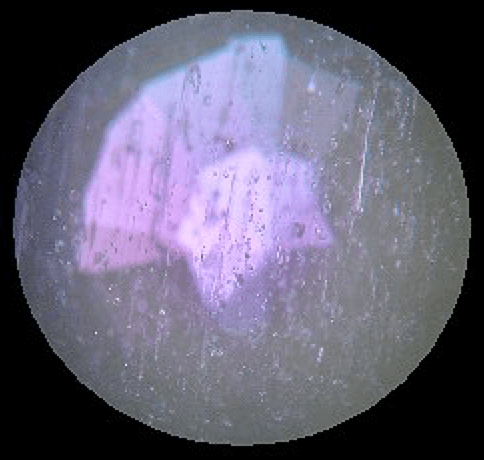Identifying Synthetic Gems
Distinguishing between natural and synthetic gems is a critical skill for gemologists. Learn about gem making processes and the telltale signs they leave.
14 Minute Read
Basic Terminology
You should know the following definitions:
- Natural Gems – formed in the Earth
- Synthetic Gems – duplicates of natural gems grown in a lab
- Homocreates – synthetic gem materials with no natural counterparts
- Imitations – gemstones or other materials presented as other kinds of gems
You can find more information on these terms in our guide to gem classification.
Keep in mind that some of these definitions can overlap. For example, you may find a synthetic corundum stone offered for sale as an imitation aquamarine.
What to Look For First
Very fine clarity may be the first indication you’re dealing with a synthetic, since few natural gems are clean to 10X, much less anything higher. If you can’t find natural inclusions with a loupe, you probably have a synthetic. While this isn’t proof, it’s a strong clue. You should investigate further.
Unfortunately, the opposite isn’t necessarily true. While most synthetics are very clean, you’ll find some stinkers out there. Don’t assume you have a natural gem just because it contains many inclusions.
Synthetic gems mimic the best of the natural gem world, so expect them to…
Donald Clark, CSM IMG
Related Articles
Destructive Gemstone Tests: Acid Testing
Identifying Garnets Simplified
Conflicting Gemology Terms and Definitions
Ultraviolet Testing and Gemstone Identification
Never Stop Learning
When you join the IGS community, you get trusted diamond & gemstone information when you need it.
Get Gemology Insights
Get started with the International Gem Society’s free guide to gemstone identification. Join our weekly newsletter & get a free copy of the Gem ID Checklist!
